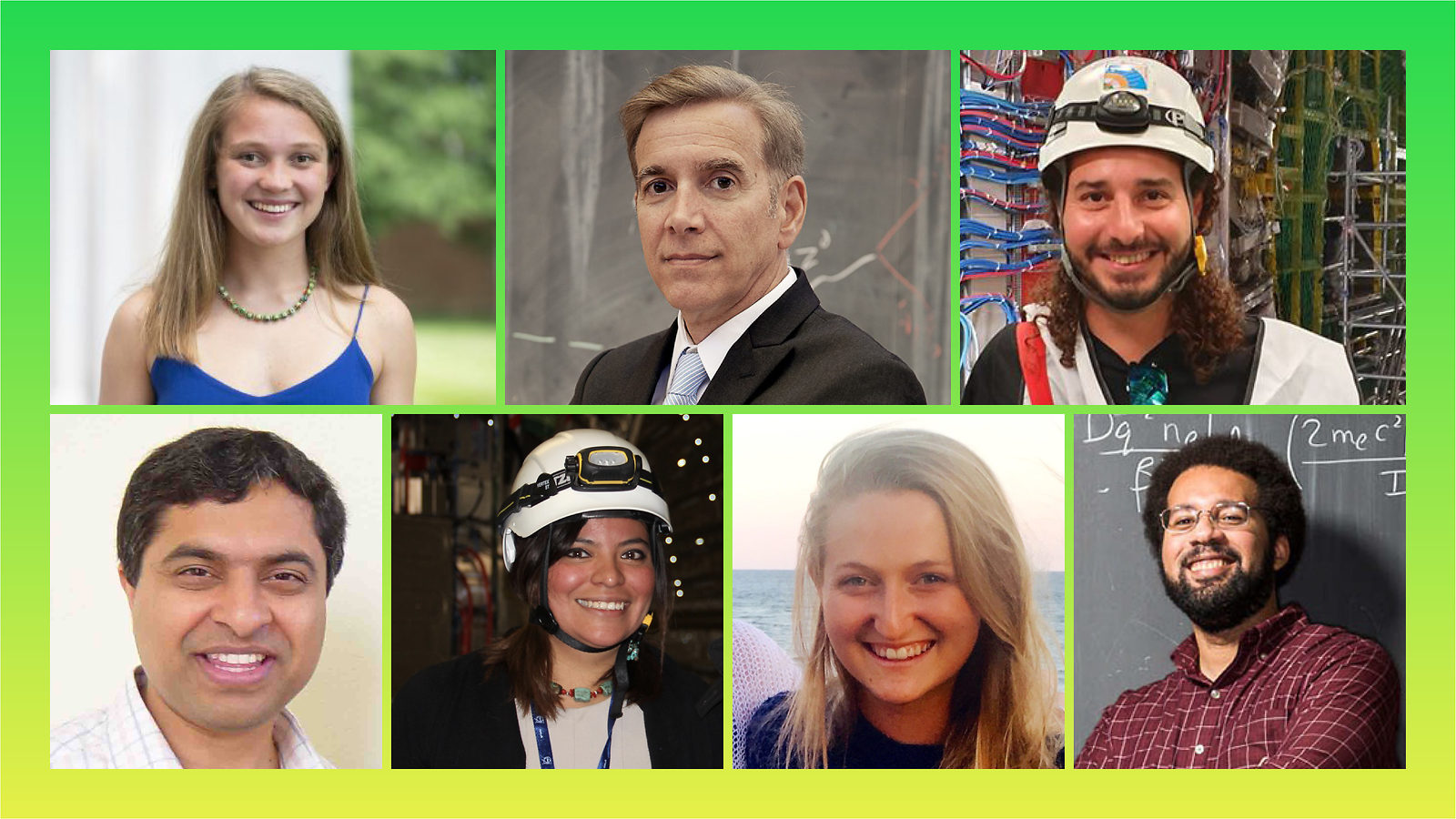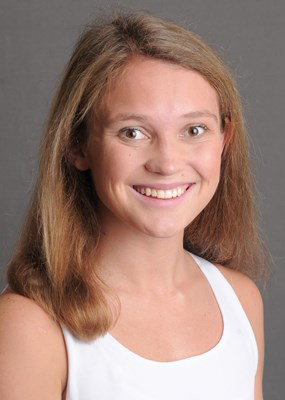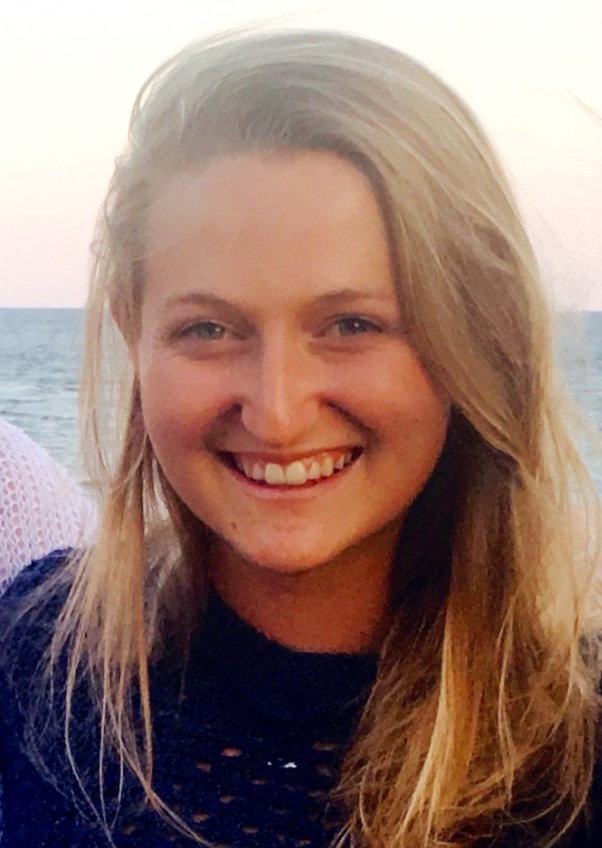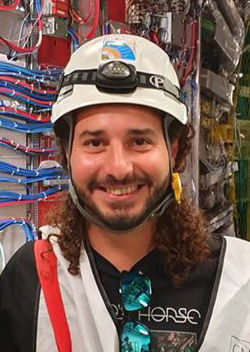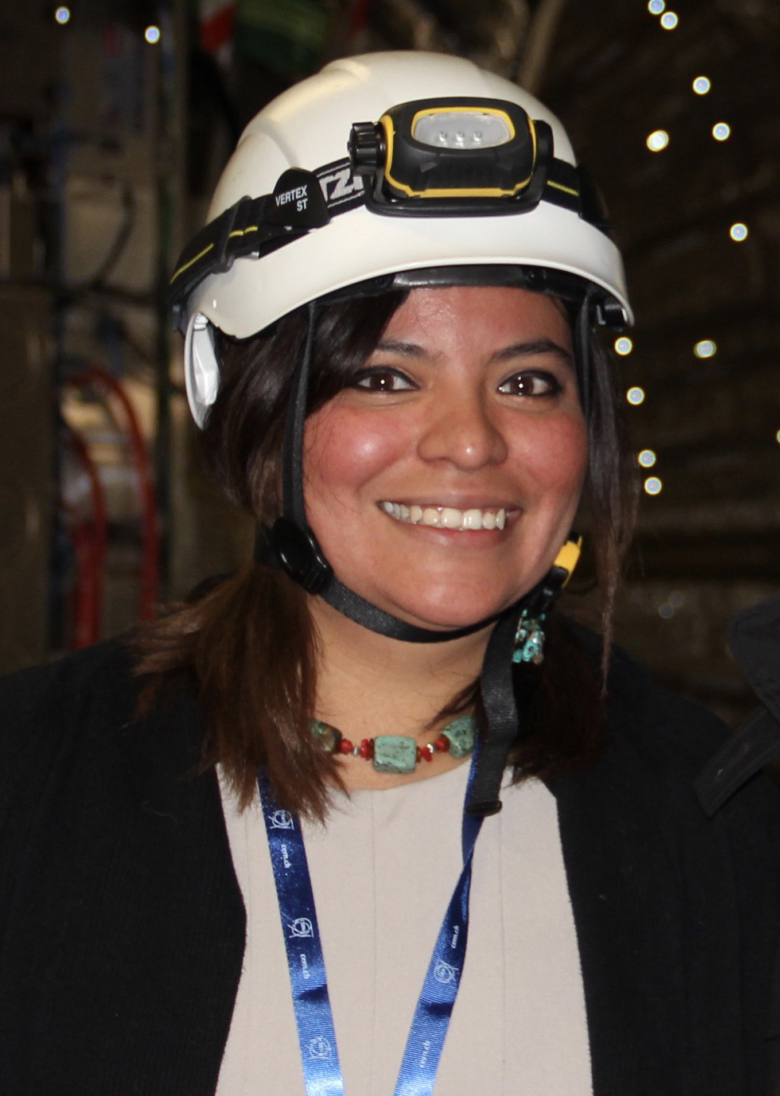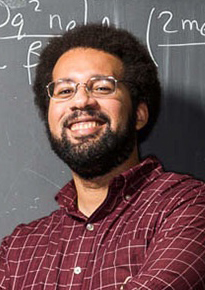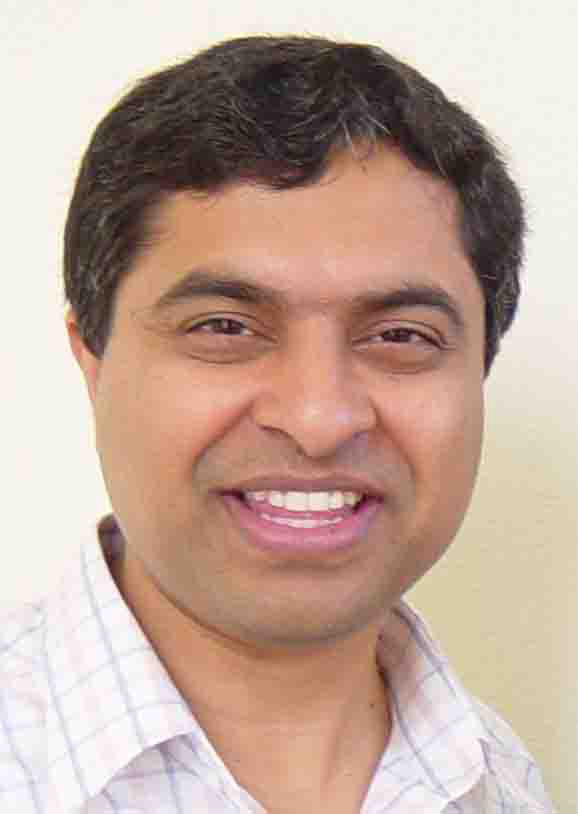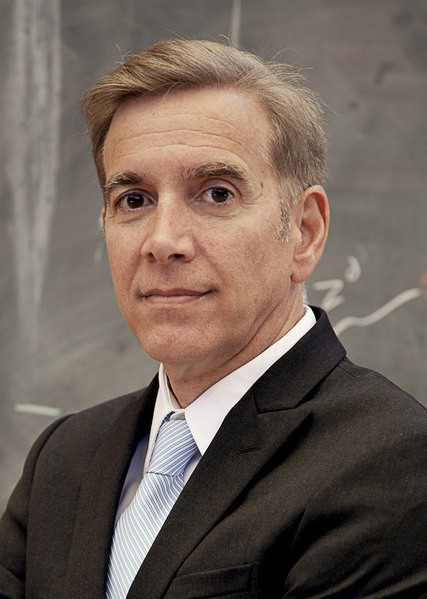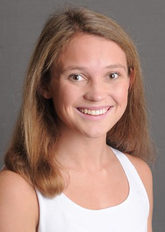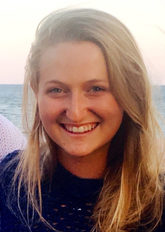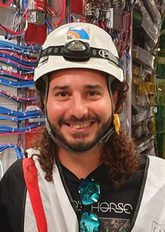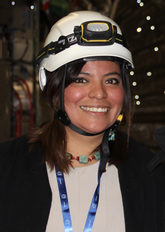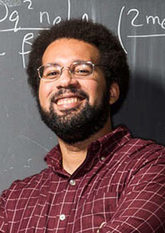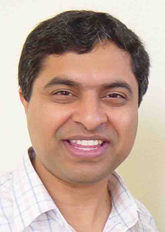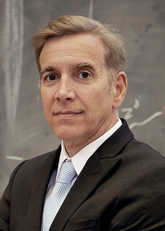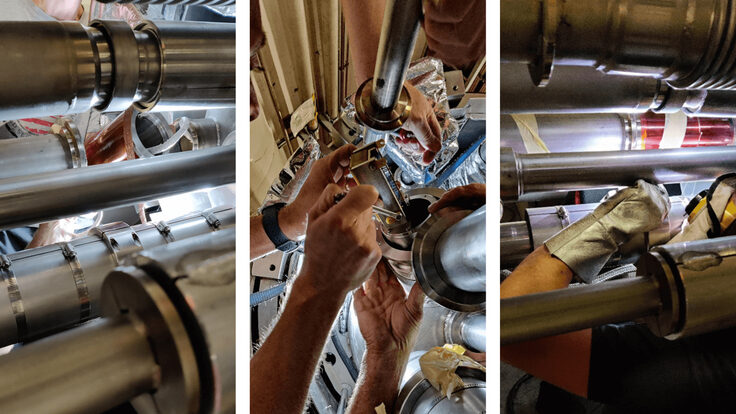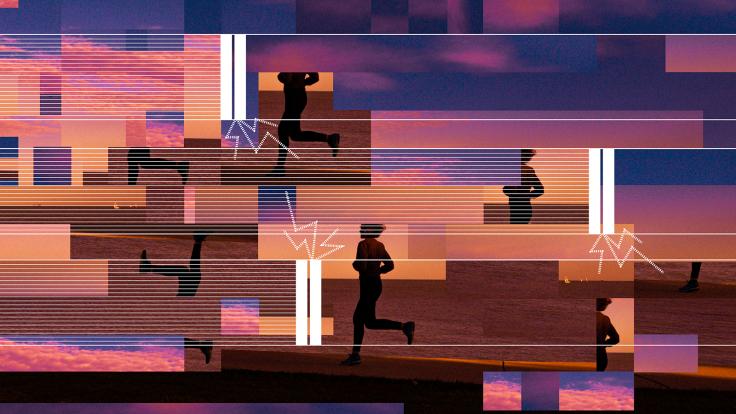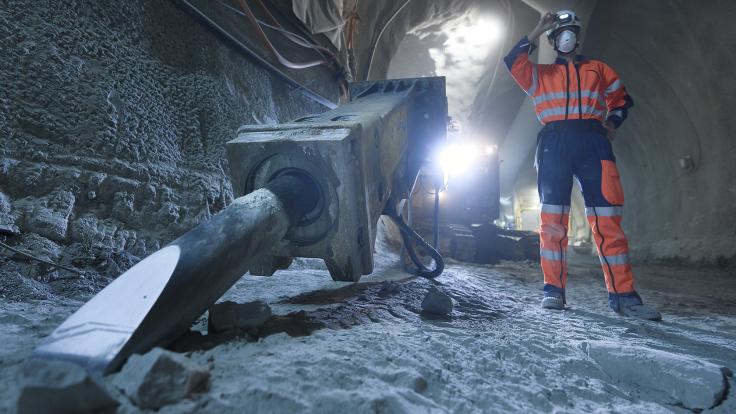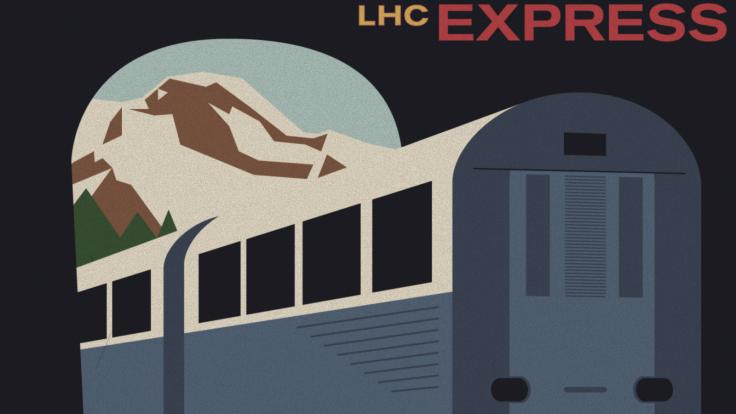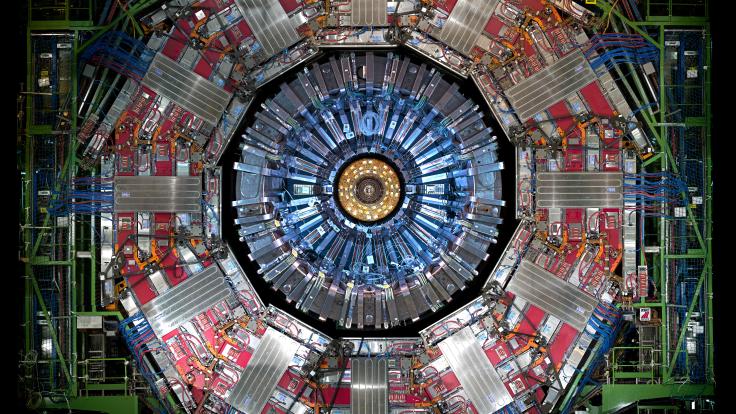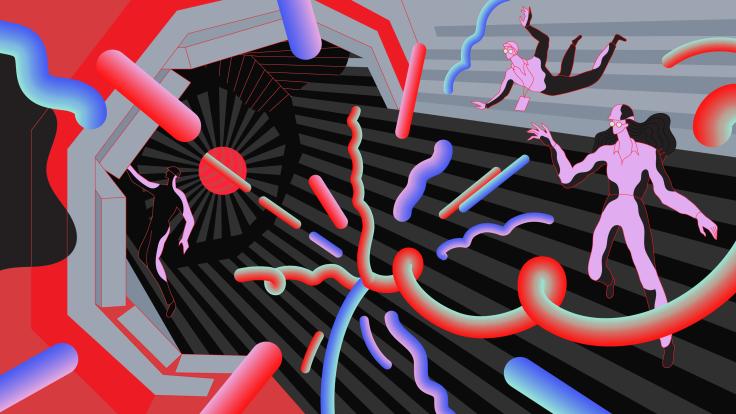When UC Santa Barbara professor Joe Incandela started graduate school in the 1980s at the University of Chicago, he didn’t know where his decision to study physics would take him.
“I was the first member of my family to graduate from college,” he says. “It was all uncharted territory for me.”
A combination of hard work and good timing placed Incandela on the team that discovered the top quark at the US Department of Energy’s Fermi National Accelerator Laboratory in 1995. Nearly two decades later, he was elected spokesperson of a 3000-member experimental collaboration at CERN and, the following year, jointly announced the discovery of the Higgs boson.
“My advisor in the early ’80s told me to never get good at anything you don’t want to do for the rest of your life,” he says. “Luckily, I’ve really enjoyed everything I’ve done so far.”
Most people will not follow Incandela’s path all the way to experimental spokesperson or tenured professor. But those who study particle physics will find that every step of the journey offers a new perspective and new set of responsibilities. Today, Symmetry checks in with LHC scientists in seven different positions, working to define their own paths.
Undergraduate student
Laura Bruce, Washington and Lee University
Before undergraduate student Laura Bruce dipped her toe into scientific research, she was a competitive swimmer. But when an injury required her to get surgery on both shoulders, she used the break from her sport at Washington and Lee University to try something new.
“I loved physics and was good in the classroom, but I didn’t have any prior experience,” she says. “I finally got up the courage to ask one of my professors about doing research; the worst thing he could say is no.”
He said yes. Bruce started by learning how to operate a scanning electron microscope, using it to scan slides of silica nanoparticles. “In the beginning, my professor guided me a lot in what I needed to get done,” she says.
After taking a class about particle physics and visiting CERN with her university, Bruce applied for and was accepted into a CERN-based summer research program through the University of Michigan.
“It was probably one of the coolest summers of my life,” she says.
While a summer student at the international laboratory, Bruce attended lectures in the morning and spent the afternoons working on her own project, which involved using data from the ATLAS experiment at the Large Hadron Collider to look for evidence of new physics.
“During my first month at CERN, I had to learn a lot about my project and how to code in C++,” she says. “It would also be really frustrating at times. I would spend four hours working on my code trying to figure out why it wasn’t working, and then it would be something like I forgot a semicolon.”
As time progressed, Bruce found that she needed less and less guidance from her supervisors. “I was able to make my own plots and predictions, and I had a pretty good understanding of my project,” she says.
This year, Bruce was accepted into several graduate programs. She is still deciding what path to pursue, and is not certain what her future career might look like. But for now, she is excited to go to graduate school and continue to do physics research.
“I’ve learned in the past that you can never know what to expect because things might suddenly change,” she says. “For now, I’m planning to go to graduate school and get a PhD, and then I would like to do a postdoc at a large accelerator laboratory.”
Graduate student
Kiley Kennedy, Columbia University
During her first two years of graduate school at Columbia University, Kiley Kennedy split her time between challenging coursework and teaching undergraduates. Now she’s based at CERN and employs a completely different set of skills for a new set of responsibilities.
“Physics in the classroom is very different than physics research,” she says. “To do research, you need a lot of creativity because you’re asking questions that haven’t been asked before.”
During her first year at CERN, Kennedy spent most of her time developing and testing software for a part of the ATLAS experiment called the Liquid Argon Calorimeter. In April 2019 she became a run coordinator for this component and was responsible for overseeing its testing and upgrades.
“It’s a big responsibility and at first it seemed a little crazy to be in charge of such an important part of the detector as a graduate student,” she says.
But Kennedy says she found the support and mentorship she needed to progress. “Everyone wants you to succeed because everyone benefits when you do,” she says.
Today, Kennedy has shifted her attention away from the detector and is focused on analyzing data from ATLAS and searching for evidence of new physics. This analysis will eventually evolve into her PhD dissertation.
After nearly two years of detector and analysis work, Kennedy says she feels capable and competent as a researcher. “Working at CERN fosters a lot of independence,” she says. “At the same time, there are a lot of people I work with regularly and who I can learn from.”
Postdoctoral Research Fellow
Andres Delannoy, University of Tennessee, Knoxville
University of Tennessee postdoctoral researcher Andres Delannoy still thinks about the pixel luminosity telescope, a detector part that measures the rate of particle collisions in the Large Hadron Collider. “I’ll wake up in the middle of the night, look at the laptop and the plots will look really bad,” he says. “But it’s just a dream and I’m still asleep. I guess technically it’s a nightmare.”
The LHC is currently shut down for upgrades and repairs, but the responsibility of taking care of this piece of the CMS experiment has stuck with the pixel luminosity telescope operations manager.
“There was a lot of pressure,” he says. “It didn’t matter if it was 3 p.m. or 3 a.m. If there was a problem with the PLT, I needed to fix it as quickly as humanly possible.”
That pressure has been a big difference between working at CERN as a graduate student and working at CERN as a postdoc, Delannoy says. As a graduate student at Vanderbilt University, Delannoy depended on the postdocs in his group. “They were my lifeline,” he says. “When I got stuck, I worked with the postdoc. If things got super stuck, then my postdoc would figure it out.”
But taking on the role of lifeline for a new generation of graduate students—and of mentor to undergraduates as well—has pushed him to grow as a researcher, he says.
“As a postdoc, you have to comprehensively absorb and understand everything because you are now in the position of determining what needs to be fixed, what needs to be studied, and what needs to be prioritized,” he says. “If you don’t know something, then you need to know whom you can ask.”
Delannoy’s postdoc with the University of Tennessee will finish at the end of the year. He is currently applying for a second postdoc, which would allow him to continue his work on CMS and stay at CERN. He’s also considering trying out a new branch of particle physics, such as neutrino research, as well as options outside of physics entirely.
“I’d like to stay in physics, but I’m also realistic,” he says. “It’s a balance for me. I don’t want physics to absorb my life—I have other interests and hobbies."
Assistant Professor
Indara Suarez, Boston University
When starting the application process for professorships, Indara Suarez set herself a five-year timeline.
"I had met people who had been postdocs for a long time and this had affected their enthusiasm about the field,” she says. “I love particle physics and never wanted to become unhappy because of my job. After five years, I planned to venture outside academia. We have the skills to solve many important problems and are not limited to LHC physics."
Suarez applied to six positions, but she was also invited to give seminars at a few other universities. “One of those turned into an offer with a great group,” she says. "The job market is extremely competitive. I was very fortunate to have options; it was a good year to apply."
Suarez was offered and accepted an assistant professor position at Boston University.
During her first semester at BU, she didn’t have any teaching duties, so she dedicated herself to wrapping up projects she had started as a postdoc, writing grant proposals and building a good team. “It was a smooth transition because I had time and freedom,” she says. “My second semester is when I started teaching, and it took up a lot more time than I thought it would.”
As a second-year assistant professor, Suarez is establishing the foundation that BU will eventually use to determine if she receives tenure. “I’m working on my teaching techniques and developing ideas that can be engaging in the classroom,” she says. “At the same time, I’m establishing a good research program and doing university service work, such as graduate student recruitment and diversity and inclusion activities.”
While Suarez misses throwing herself into research full-time, she says she is glad that teaching is a major part of her job.
“For me, the most rewarding part of being a faculty member is seeing students make progress, both in class and in research,” she says. “My undergrad and graduate students are currently working on CMS detector upgrades, and they are doing such a good job. I feel like I’ve passed on my expertise to them.”
Associate Professor
Peter Onyisi, University of Texas at Austin
When Peter Onyisi arrived at the University of Texas at Austin as an assistant professor in 2012, there was no local group of scientists involved in the ATLAS experiment. “I had to build it from scratch” he says. “There’s a lot about being a professor that you don’t learn as a postdoc.”
Onyisi quickly learned how to draft grant proposals, scout talented young researchers, teach undergraduates and find the areas in which he and his group could make the biggest impact.
“The pattern of what you’re going to do as a professor gets established pretty early in your faculty career,” he says. “It’s important to find a good niche when you start and to try to set up the processes so that you have time to manage everything.”
Moving from postdoc to professor was like moving from team player to team captain, Onyisi says. “As a postdoc, you get used to doing things yourself,” he says. “As a professor, you have to take a step back. It’s a challenge to stop yourself from leaping into the work of younger researchers and solve their problems. But that is not your job; your job is to mentor and shepherd them so that they can grow as physicists.”
In addition to working with his team, Onyisi has for the last two years served as the data-preparation coordinator responsible for overseeing how the raw data is processed and interpreted on the ATLAS experiment. This role regularly brings him to CERN, where he spends most of his time meeting with colleagues.
Now that Onyisi is established as a tenured, or permanent, professor within UT Austin’s physics department, he says his responsibilities have shifted again, from team captain to team coach. He considers the big picture and keeps his research group on the right track. “Your group is going to be most of your productivity, so you need to keep them in a good place.”
Professor, Department Chair
Sridhara Dasu, University of Wisconsin, Madison
Typically, a professor splits their time between research, teaching and university service work, says Sridhara Dasu, a professor of physics at the University of Wisconsin, Madison. “These are the three pillars.”
But a few years ago, he was elected the physics department chair, an added responsibility on top of heading the CMS research group at UW. With this shift in his job, he had to rethink his pillars.
While serving as chair, Dasu requested to not have any teaching duties so that he could instead focus on managing the administrative, teaching and financial resources to keep the labs and classrooms staffed and supported.
He is charged with hiring and promotions—a responsibility that he says has the biggest lasting impact on the department. “Anyone you hire has a good chance of being at the university for their entire career,” he says. “You need to have a strategic plan which outlines what you want to do immediately and long-term so that you don’t end up being a department focused on one exclusive subfield.”
In hiring, Dasu thinks about what sorts of skills the department values and how to attract and support people who have different backgrounds, perspectives and outlooks.
He says he still spends time looking out for his research team. It’s just that now in addition to overseeing his own graduate students and postdocs, he’s also the captain of an even larger team, consisting of 44 faculty members in fields ranging from plasma physics to string theory.
“To become the department chair, you need to demonstrate to other fellow members of your department that you have everyone’s interest in mind,” he says. “The chair needs to think about how they can make every faculty member in the department look good.”
Being chair has its challenges, Dasu says. For example, it was recently up to him to handle a dispute between students that came to blows. “Being the department chair is sometimes considered a punishment,” Dasu says. “You get to know all the bad sides of everything.”
At Wisconsin, the physics department chair is nominated and then elected by fellow physics professors. In Dasu’s more than 20 years at the university, the chair position has always rotated between the different sub-disciplines, and the decision has always been unanimous.
Both as a professor and the department chair, Dasu says he has found his most satisfaction from seeing those around him succeed.
“As a professor, it’s the most rewarding when a student gets an award or their next job in a good place,” he says. “As the chair, if I hire someone and they end up getting a substantial research grant or write a really great paper, that is also rewarding. Even if you don’t do that research, you played a role in hiring them and giving them that chance.”
Professor, Experimental Spokesperson
Joe Incandela, UC Santa Barbara
As a teenager, Joe Incandela worked for his dad on construction sites and spent his summers sorting materials. By the time he graduated from college, he was overseeing these projects as the deputy project manager.
The experience prepared him well for his first assignment in graduate school: designing and building a detector for a Fermilab experiment.
“You don’t always realize that everything you do can have a big impact later on in life,” he says. “Everything you do comes into play when you go into physics. It’s a demanding field with lots of different skills needed.”
He wasn’t sure whether he would stick with academia or move to industry after graduate school. But the opportunities to stay kept on coming, and he always leapt at the chance.
In late 2006 Incandela accepted the role of deputy to physics coordinator Paris Sphicas for the CMS experiment at the Large Hadron Collider. Together they were responsible for planning and overseeing all of the physics analyses. “There were lots of things which had to be done that we don’t even think about anymore,” he says. “We had to think about the basic infrastructure.”
In 2010, as the LHC was about to collide protons and collect data for the first time, Guido Tonelli, CMS spokesperson, asked Incandela to be one of his two deputies. The year after, Incandela ran for and was elected spokesperson himself; he was now leading one of the largest scientific collaborations to ever exist, at one of the most exciting times in scientific history.
“It was a really intense time,” Incandela says. “We didn’t know what major discoveries could be right around the corner, and we had this competition with ATLAS. My main goal was to make sure we were in a position to be part of any discovery and not miss it.”
With the LHC finally in full swing, Incandela had to predict problems before they arose and sometimes take executive action to implement solutions. “I was always expecting something to go wrong,” he says. “And when it did, or when we saw something unexpected, I had to jump in. Suddenly, I would be awake for several days trying to figure it out.”
When the LHC ramped up to its full intensity, for example, Incandela and his colleagues discovered that the data was coming in faster than they could process it.
He quickly called together a team of experts and made the tough decision to bypass the standard CMS governance protocols to tackle the problem as quickly as possible. Over the course of six months, the collaboration members completely changed how they processed the data and did their analyses. “It was baptism by fire,” he says. “The people who worked on this were brilliant and they came up with great solutions.”
The stress and sleepless nights paid off, Incandela says. On July 4, 2012, he had the honor, alongside then ATLAS Spokesperson Fabiola Gianotti, of jointly announcing the discovery of the Higgs boson.
Two years later, he passed the reins to his successor and returned to UC Santa Barbara to resume life as a professor. “I was hoping for some quiet and to be able to analyze data,” Incandela says. “I wanted to get back to the responsibilities of a postdoc. But you can’t ever really go back.”
Today, Incandela is UC Santa Barbara’s vice chancellor for research.



